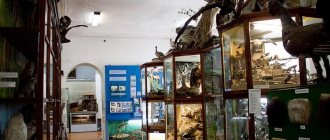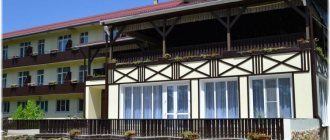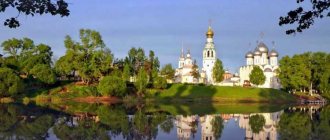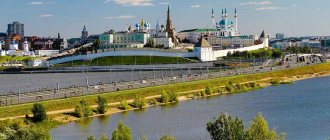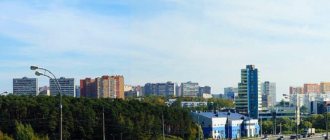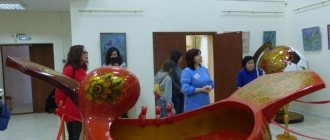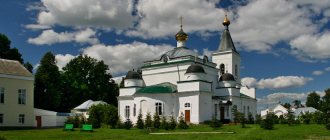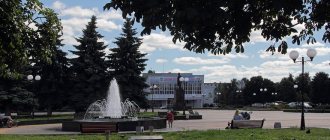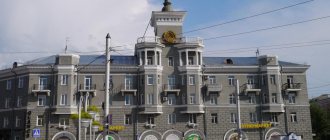On the elevated bank of the majestic Ob River lies the city of Barnaul, the capital of the Altai Territory. Established by the will of the famous industrialist A. Demidov in 1738 with the construction of a silver smelter here, it began to develop rapidly in the 19th century, turning over the years into a large industrial and commercial center of Steppe Altai. Despite its relatively young age, it can surprise you with its unique 19th-century buildings and modern monuments, and captivate you with the beauty of its historical quarters, built in the image of St. Petersburg. Photos with a brief description of the attractions will help you create a program of excursions around the city.
Sights of Barnaul and Altai Territory
Perhaps every Russian at least once in his life thought about going to Altai - the legendary picturesque region with healing air. But many people never manage to see the sights of Barnaul and the Altai Territory. There are reasons for this: it is difficult to plan a route, the journey takes time and the conditions seem quite wild. But this is only at first glance. If you are not sure about the trip, you should start with Barnaul. This is the administrative center of the region and is quite easy to get to. It is often the end or starting point of future adventures in Altai.
Choosing a time to visit the sights of Barnaul and the Altai Territory You should immediately decide on the month of your trip in order to plan your vacation. The optimal period is considered to be from May to September. At the same time, at the end of spring, a prolonged thunderstorm can significantly spoil your vacation. The temperature will be comfortable enough for long walks – 17°C. In the first month of summer, the rains will no longer be so heavy, the air will warm up to 20°C, and crowds of tourists will not yet have time to trample all the flowering meadows in search of the best panorama for filming. But in July and August it is worth stocking up on a larger budget. At this time, prices for vacations almost double, but the warmth will allow you to swim in local lakes and explore natural attractions. If you decide to go in the fall, you should stock up on warm clothes and avoid spending the night in a tent.
New development
In 1963, the first television center with new equipment was opened in Barnaul, which made it possible to launch on-air television and radio broadcasting throughout the Altai Territory. The complex of buildings was equipped with a special tower of 197 meters, which to this day is the tallest structure in the region.
At the same time, the first comprehensively built-up block of residential buildings appeared within the boundaries of Sotsialistichesky Ave., st. Youth, etc. Krasnoarmeisky, recalls architect Alexander Dering. The facades of serial buildings were decorated with artistic panels made by famous artists, including Vladimir Dobrovolsky, who depicted his son here.
The designers were able to combine new buildings with the remains of private estate development on this site and around it. The quarter received a 3rd degree Diploma from the State Construction Committee of the RSFSR in 1966. Much has changed since then: one of the houses has already turned its entrances in the opposite direction, small groves with a rich selection of herbs and flowers have formed, and the courtyard has become the roof of underground cellars.
In 1971, nine-story buildings appeared in Barnaul (at Lenin Ave., 96-102, next to the New Market). They were also decorated with mosaics, since the architecture was inexpressive. At the end of 2007, the first 24-story residential building in Siberia was built in Barnaul (at Papanintsev Street, 111), 86 meters high. And last year, a real residential skyscraper was put into operation - the Stolichny residential complex on the street. 1905, 25, which together with the spire reaches 102 meters.
March 11, 11:03
Urban Adventures
Barnaul
According to documents, the city was founded in 1739, during the construction of a copper and silver smelter. You can still walk through the historical ruins - various excursions are available. But this is only a small part of what you can learn about the history of the city. Barnaul is rightfully considered the cultural heritage of Russia, and museum lovers are in for a pleasant surprise here. The sightseeing map will look like this:
Nagorny Park
Staircase of Nagorny Park
A huge territory of 14 hectares is washed on both sides by the main rivers - Barnaulka and Ob. Fans of the plant world will appreciate the work of those who laid out the spreading alleys of fir, spruce, cedar, and walnut trees, and combined them with fruit plantings. Here you can admire the surface of the water, and also appreciate the scale of the New Bridge from the outside - this attraction has already acquired mysticism and urban legends. At the moment, active reconstruction of the park is underway, the famous zigzag staircase is being restored.
Address: Russia, Barnaul, st. Mamontova, 19
Mountain pharmacy
Mountain Pharmacy Museum
Connoisseurs of architectural monuments will appreciate the small one-story building, built in the 18th century in the classicist style. Now the building houses pharmacies - people from all over the country came to them to purchase herbal infusions and medicinal tinctures. There is also a museum - it hosts pharmacological exhibitions, which are best visited with a guide.
Address: Russia, Barnaul, st. Polzunova, 42
Altai Museum of Local Lore
Among the attractions of Barnaul and the Altai region, this is one of the most important places. It was organized by mining engineer and inventor P.K. Frolov together with Friedrich Gebler, a 19th century Altai explorer. This was the very first museum in Siberia, at the moment it has historical status. In the halls of the restored building you can see collections of mining, stone products and local history exhibits that tell about the history of the region.
Address: Russia, Barnaul, st. Polzunova, 46
Intercession Cathedral
Intercession Cathedral
A shrine of the region, a symbol of the Orthodox faith and spirituality. The attraction was built in 1898% and consecrated in 1908. The cathedral was built in the traditions of the neo-Byzantine style. It’s worth going there even without religious considerations - to get acquainted with the works of the best masters of the academic school. The cathedral often organizes excursions.
Address: Russia, Barnaul, st. Nikitina, 137
Monuments
Barnaul
There are quite a lot of monuments in the city. Among them is a monument to Viktor Tsoi, a life-size T-34 tank and a beautiful memorial to settlers in Altai. On the way, you can look at the architecture of the famous convent, the Znamensky Church and the Church of St. Seraphim of Sarov.
The architecture of the city is strongly reminiscent of the streets of St. Petersburg. Therefore, a walk along the cozy streets will bring a lot of positive emotions. For those who come with children, another attraction will help to take their mind off historical values – a large-scale zoo. It features predators, primates, ungulates and birds. In addition, a contact department with pets was built on its basis. The ostrich farm will bring even more emotions - here you can feed the birds directly from your hands, ride a donkey, and communicate with its affectionate and friendly inhabitants.
City of Prisons
As in all of Siberia, there were many exiles in the city. According to some reports, they were secretly kept in the basements of various buildings. In the chronicles of Barnaul, the “house of correction” was first mentioned in 1840, according to the website of the Federal Penitentiary Service. It was located at 81 Kanatny Ave., then it was a convent, and at the beginning of the 20th century it became a pre-trial detention center.
In 1895, a royal prison appeared at 36 Sibirsky Ave. Next to it there was a beautiful church, which, according to local historian Daniil Degtyarev, disappeared without a trace. Now almost the entire territory is empty; soon they want to build it up with high-rise buildings. Then a women's colony was built at 147b Lenin Ave. Rumor has it that the slaves sunbathed topless on the roof.
Tsar's prison on Sibirsky Ave., 36
Photo: Danil Degtyarev
On the one hand, prisons were more correctional labor institutions: prisoners grew crops, vegetables, livestock, worked on the railway, factories, construction, and in sewing shops. On the other hand, the repressive policies of the ruling regime overcrowded the detention centers, forcing them to constantly build new ones, which burdened the state treasury.
TOP 5 beauties of the region
Nature lovers should venture beyond the hustle and bustle of the city. To do this, you can rent a car in the city - with or without a driver. You can travel with tents (if the time is chosen correctly) or as part of an excursion group. Altai Territory has a good tourism infrastructure. At all notable points there are tourist centers and hotels of different price categories. Camping definitely won't get wild.
List of places you can visit by car:
Seminsky pass
Seminsky pass
You can feel the vastness of the region from the observation deck; it’s worth going to it early in the morning. The attraction is located not far from civilization. Here you can take a break from everyday life - enjoy the views from the site itself, go to the lake nearby and meditate under the smells of Altai medicinal herbs. It is worth noting that the Chuysky Trakt pass is located at an altitude of 583 km. The climb here is straight and takes 9 km, so be prepared for some ear pain.
Address: Russia, Barnaul, prosp. Lenina, 29/72.
Devil's Finger Mountain
Devil's Finger Mountain
This is a high rocky ledge from which you will have an unsurpassed view of the Katun Valley, and with it the entire Altai. Esotericists believe: those who visit its peak will be recharged with energy, and those in need will be able to be cured of infertility. The attraction keeps many legends. The most famous one says that the mountain is the finger of a villain named Cherto. And the Moon itself drove him into the ground.
Address: Russia, Altai region, Altai region, village of Katun.
Chike-Taman pass
Chike-Taman pass
Previously, getting here was difficult and dangerous due to the dizzying serpentine road. Now there is an asphalt road leading to the pass; the length of the climb is only 4 km. In addition to the observation deck with beautiful views, you can see the monument to the builders of the Chuysky tract, the geyser lake and the Kur-Kechu tract.
Address: Russia, R-256 Chuisky tract.
Lake Teletskoye
Lake Teletskoye
Stock up on warm clothes and you can go fishing or meditate near a lake with ice-cold water. This can be done at any time of the year. Nearby you will find a whole network of attractions - Kobru and Chodor waterfalls, Charyshman Valley, Karagay Bay, ethnopark and zoo, Mount Cucuy: by the way, it is convenient to climb to its top by ski lift. The lake itself is considered sacred by locals, and esotericists believe that it has real universal magic. Just don’t forget to get a pass - they are checked by the Altai State Natural Biosphere Reserve.
Address: Russia, Barnaul, Severo-Zapadnaya street, 155A.
Multinskie lakes
Multinskoye Lake
The last of the classic list for tourists. There are five such lakes in total, and three are enough to visit without tents and a thermos. This attraction is a paradise for unity with nature. Pass the water cascade “Multinsky Noises”, which is located between the Lower and Middle Lakes, and you will get to the beautiful and clean Upper Lake. It is located on the territory of the Katunsky Nature Reserve. Worth thinking about a vacation!
Address: Russia, Zamulta village, Novaya street, 4
Extreme Altai
Mount Belukha
Those who prefer extreme recreation can go further and overcome the most breathtaking serpentine of the Katu-Yaryk pass. The average slope of the road is 10° - with a slope gradient of 35°. The attraction includes 9 turns, which fit into just 3.9 km of road. And for inveterate climbers, climbing Mount Belukha is suitable. Its height is 4506 meters. Only at the top will you be able to see blue lakes and unique plants listed in the Red Book. But be careful - the climb takes 2 days, and even in summer you can get snowed here.
It is quite difficult to meet a person who, after traveling to Altai, would not want to return again. The Altai region is home to cascades of rivers, historical monuments, mountain peaks and crazy passes. It is impossible to cover all the sights in a short vacation, so you can and even need to return! Here you want to wake up at dawn, wash your face with ice-cold water from the lake and go hiking. Don't ignore this desire. The region will charge you with energy, give you health and lure you with its aesthetics.
{WIDGET}
Legal brothels
Interestingly, until 1914, brothels operated legally in the city. According to some reports, the first one opened in a two-story wooden building on the street. Pushkina 80. By the way, it has survived to this day, including carved wooden decor on the facade, and was even recently put up for sale.
The brothel houses had their own strict rules - the “workers” were required to go to the bathhouse regularly, undergo a medical examination and use less cosmetics. “Night butterfly” certificates were obtained from the police. Brothels were located away from schools and churches, and were maintained by women living in the same house.
st. Pushkina, 80 in Barnaul
Photo: Altai real estate portal
According to unofficial sources, when doctors sounded the alarm about the massive infection of men with syphilis, all brothels in Barnaul decided to close. At that time there were about 15 of them.
At the beginning of the 20th century, several small marinas were replaced by the River Port (at the intersection of Pushkin and Promyshlennaya streets). It went out onto the water in the area of the current bucket. According to the city administration, in its building there was one of the most fashionable Soviet restaurants, a radio room, and next to it stood a monument to Lenin. None of the above has survived to this day.
In the 1930s, the changing course of the river opposite washed up the island, on which the city's first sandy beach was created. A ferry delivered to him. It was one of the most popular vacation spots for city residents. After the tragedy with the capsizing of the ship, when 15 people drowned, the authorities decided to build a suspension bridge. Today, only fragments of its supports remain.
Old river port in Barnaul
Photo: Altai State University
Lenin Avenue - a beautiful historical street
Take the time to walk along the avenue and you will see coniferous trees that are more than 200 and 300 years old, forged lanterns of non-standard sizes and shapes, the Alexander Nevsky Chapel and a modest chapel for students of the Technical University, a memorial to the memory of war victims. And the beautiful finale to the walk will be the stunning view of the Ob River from the River Station.
Museum of the History of Literature, Art and Culture of Altai
Address: st. L. Tolstoy, 2 Phone: (for excursions) Website: gmilika.ru Opening hours: 10:00-18:00 (ticket office until 17:00), Thursday from 10:00-19:00 (ticket office until 18: 00), closed: Monday, Tuesday (October - April), Sunday-Monday (May - September) Entrance fees: - for adults - from 30 rubles. — for students and pensioners – from 15 rubles. — for schoolchildren and preschoolers – from 5 rubles.
Located on a noble estate built between the 19th and 20th centuries, this is a rare example of an urban estate of this period for Siberia. 12 thematic halls of the museum reflect the course of historical and cultural processes in Altai from the time of the Scythians to the present.
The museum's fund consists of 62,000 storage units, the most valuable are:
- collections of things that belonged to: writer and director V.M. Shukshin and scientist, artist and public figure N.K. Roerich and members of his family
- collection of theater posters of Barnaul with autographs of F.I. Chaliapin
- lifetime publications of the ethnographer, publicist, founder of Siberian regionalism G.N. Potanin with autographs
- handwritten and early printed books
- icons dating from the 15th to 19th centuries
- musical instruments of the regions of Siberia
